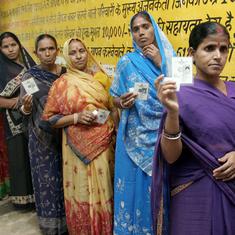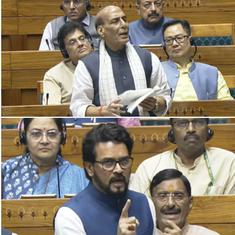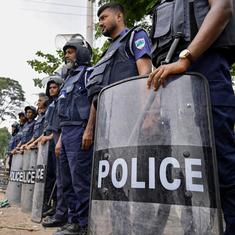The revelation in the New York Times this past week that China and Iran are on the brink of signing a major economic and security partnership is a transformative moment that presents a serious challenge to Indian foreign policy. The immediate impact has already been the end of the road for the important Chahbahar rail project, which was aimed to open up Indian connectivity to Afghanistan. But the implications for India are much greater than one commercial deal gone sour.
Sino-Iranian relations
The economic component of the Sino-Iranian partnership plan, reported in international energy media last year, involves Chinese investments in Iran of $400 billion over 25 years, with $280 billion going to the oil and gas sector and the remaining $120 billion to other core sectors of the Iranian economy.
In return, China will get long-term energy contracts plus discounts of more than 30% and first refusal rights on all major energy projects in Iran. These are audacious terms by any standard.
Sino-Iranian relations have been growing closer for years. Iran has already emerged as a key node in China’s transcontinental Belt and Road Initiative that seeks to create a web of connectivity across Europe, Asia, and Africa. With projects linked to the China-Pakistan Economic Corridor saddled with viability concerns, Iran has been attractive as an alternative route for China to insulate itself against the worst-case scenario of US-led military action in maritime Asia. India is still managing operations at Chabahar port, but if China takes over those functions, then Chabahar could also be seamlessly integrated with Gwadar, the port China is building in the next-door Pakistani province of Balochistan.
Even more consequential for India are the potential security components of the partnership. Though these might be more aspirations than hard commitments, China and Iran envisage greatly stepped-up cooperation in military and intelligence spheres, including weapons development. There is also the possibility of a Chinese security footprint in two new ports slated for construction adjacent to the Strait of Hormuz, the narrow chokepoint through which Persian Gulf oil destined for China must pass through. The sweeping nature of the agreement has caused some prominent Iranian nationalists to raise concerns about selling out to Beijing.

Eurasia rising
Why should the Iran-China development be of special concern to India? As I have written elsewhere, Eurasia is an emerging entity with geopolitical coherence, which Indian strategy has insufficiently taken into account. The Sino-Russian entente is the bedrock of the emerging Eurasia. China’s Iran move only further strengthens this trend.
Over the past decade, Russia and China have greatly expanded their footprint across West Asia. Russian-Iranian relations have been close for a number of years, with the two being military allies on the Syrian battlefield.
Russia is India’s closest partner in Eurasia, with deep ties in defence and energy. However, a challenge is looming in this relationship. The United States has threatened India with sanctions under its 2017 CAATSA law, aimed at curbing Russia’s defense and energy trade, in order to prevent New Delhi’s purchase of big-ticket arms supplies from Russia.
Despite having a seat at the Eurasian table with its membership in the Shanghai Cooperation Organization (a China-initiated regional grouping founded in 2001 with China, Russia, Kazakhstan, Uzbekistan, Kyrgyzstan, Tajikistan, and Pakistan as its other current members), New Delhi has not adequately leveraged its equities in the region.
Instead, New Delhi is embedding itself further within the China-balancing coalition known as the “Quad” – revived in 2017 with the United States, Japan, and Australia as its other members – with its focus on the Indo-Pacific, as the backbone of Indian grand strategy toward China.
The recent Chinese aggression in Ladakh is reflexively and understandably highlighting the Quad’s utility. But as the US-China rivalry becomes increasingly hostile, the Quad is showing signs of transforming into a military alliance, albeit an informal one. If current trends continue, a crisis in the distant South or East China Sea could easily drag India into an overstretched military commitment that it could come to regret.

Tehran’s strategic shift
Soon after a revolution in 1979 overthrew its pro-American monarch, Iran carved out its own version of nonalignment with the slogan “nah sharq, nah gharb” – neither East, nor West. Like Nehru’s version, Iran foreswore any strategic alliances with major powers. But Tehran’s nonalignment also had a fiercely revolutionary and Shia Islamist character to it. In post-revolutionary Iran’s conception of the world order, its security adversaries were located primarily to its West and South. Its attempted sphere of influence did not extend East beyond Afghanistan.
The first major shift in Iran’s stance emerged with its military alliance with Russia on the Syrian battlefield, which succeeded in reversing gains of anti-government Syrian rebels. Still, this alliance was limited to the smaller Syrian theatre. In 2019, Iran, China, and Russia conducted a joint military exercise in the Gulf of Oman. The Sino-Iranian agreement, if implemented as outlined, would more decisively end Iranian nonalignment and integrate Iran within the logic of Eurasia.
Deteriorating bilateral ties
India-Iran relations may be testy currently, but that has not always been the case. The two countries were were close until 2005, collaborating on opposing the Taliban in Afghanistan. But ties have been generally deteriorating since the United States made India’s Iran policy a condition for finalising the Indo-US nuclear deal announced in 2005, which ended India’s international nuclear isolation.
Consequently, India voted against Iran in the crucial International Atomic Energy Agency vote in 2005 that opened the pathway for coercive sanctions against Tehran. In 2008, New Delhi reportedly launched an Israeli spy satellite targeted at Iran. Iran in turn was likely responsible for a terrorist attack in 2012 on an Israeli diplomat in New Delhi.
Relations improved in the wake of US President Barack Obama’s turn to negotiations with Iran and the resultant Joint Comprehensive Plan Of Action agreement, which ended international sanctions against Tehran in return for a verified pathway to greatly curbing its nuclear capabilities. The Chabahar project as a key point of Indo-Iranian cooperation. Iran quickly became India’s second-largest oil supplier, offering attractive commercial terms.
The Trump administration however unilaterally abrogated the Joint Comprehensive Plan Of Action in 2017 and further demanded that all countries end imports of Iranian oil. By 2019, India had caved in and ended all such imports, the second time it had bent to US pressure on oil. The earlier moment was during the Obama presidency. The Chabahar project survived the sanctions, but progress on rail line construction was painfully slow. Thus, as seen from Tehran, New Delhi’s approach was simply a derivative of Washington’s mercurial seesaws toward Iran.
India’s strategic bind
Beyond Iran, other developments are acting to increasingly isolate India from its neighborhood. The Taliban seem set to return to power in Afghanistan. Nepal, alienated after India’s implicit support of a crushing blockade in 2015, has escalated its disputes with India. China has adroitly exploited cooling India-Bangladesh relations.
Myanmar, notwithstanding its differences with China, has signed on to a slew of Belt and Road Initiative projects. Thailand, a formal United States ally, has nevertheless increased its proximity to China. Sri Lanka too will not be easily roped into any China-balancing front.
With a weak economic hand, multiple foreign policy missteps, and now hemmed in by a belligerent China, India’s grand strategy is increasingly adrift. Actually walking the talk on multi-alignment may provide a way out. This includes exercising caution on any alliance-like commitments to the evolving Quad and a much more forceful outreach to non-adversarial actors in India’s extended neighborhood, including Iran and Russia who have their own concerns about China. The exigencies of geopolitics demand nothing less.
Sarang Shidore is a researcher and consultant in geopolitical risk and energy transitions at the University of Texas. His Twitter handle is @globalsarang.










